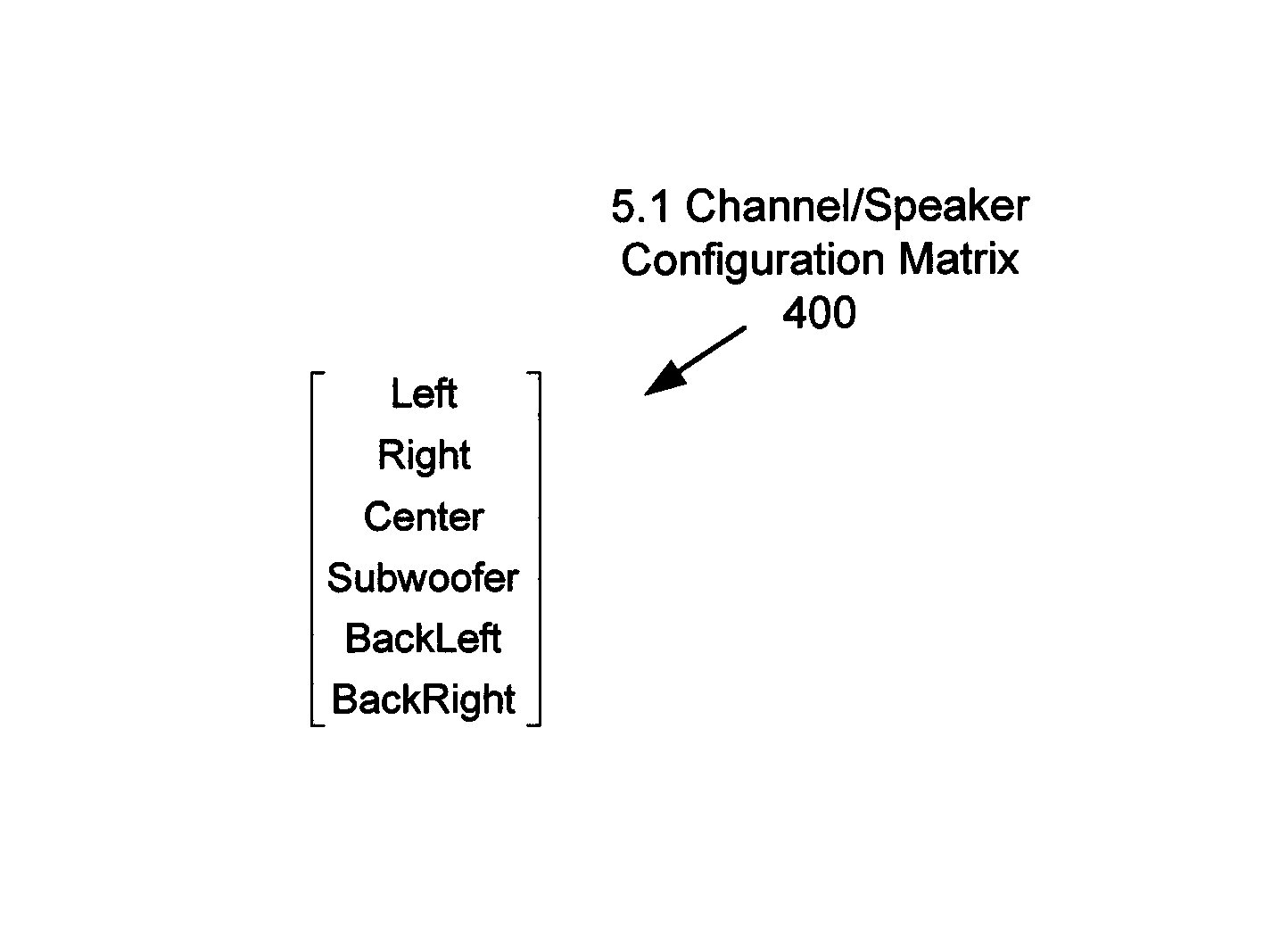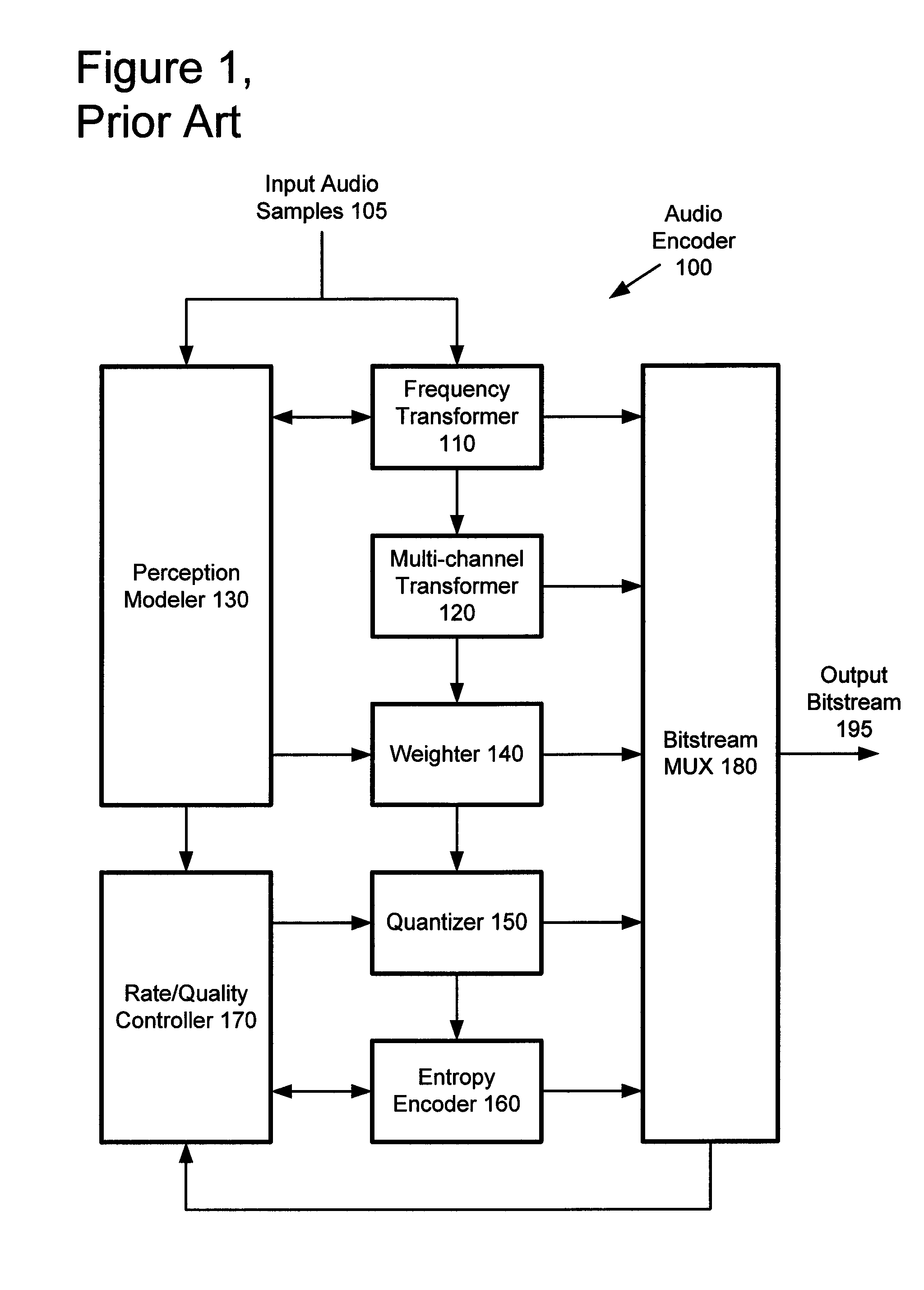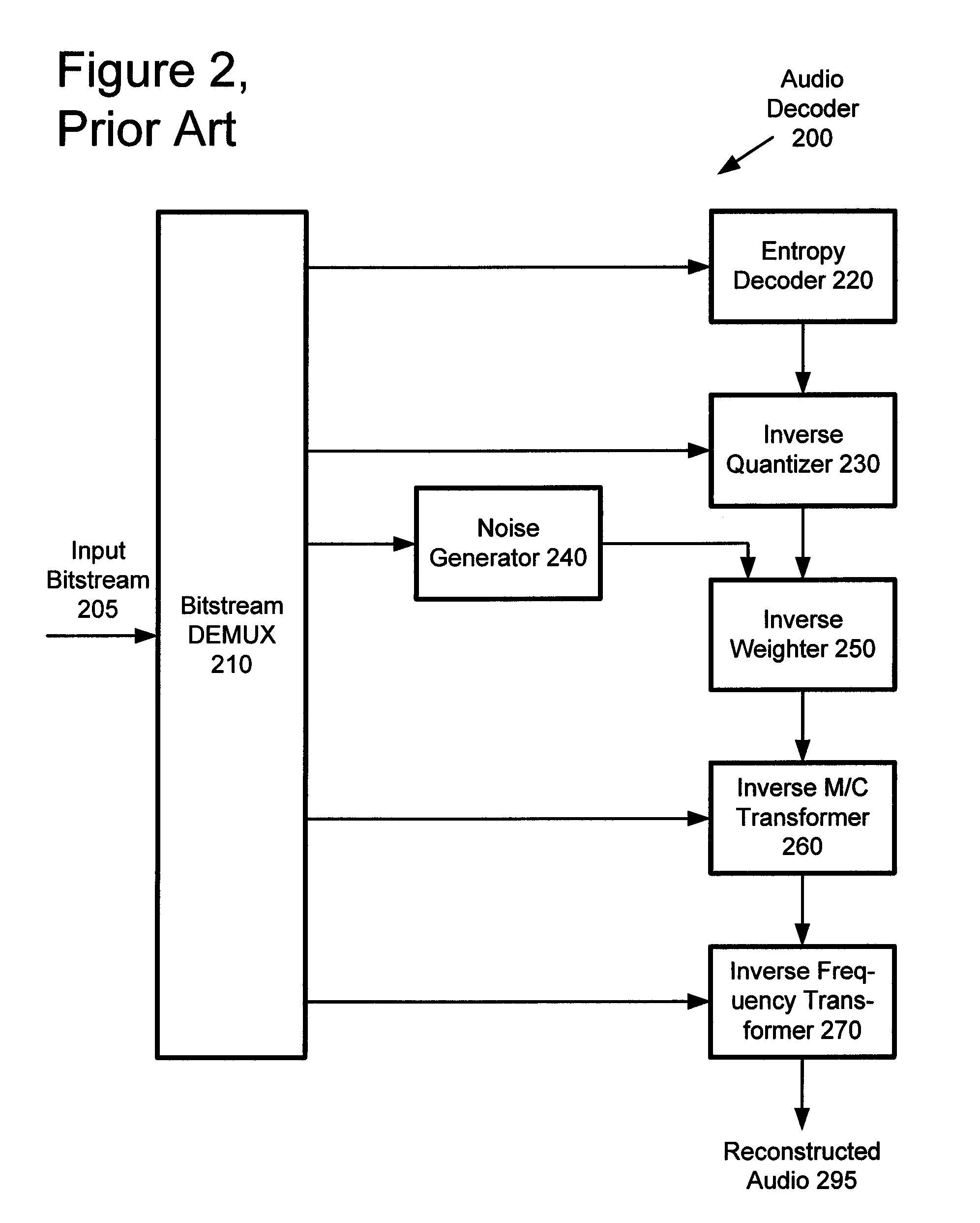Multi-channel audio encoding and decoding
- Summary
- Abstract
- Description
- Claims
- Application Information
AI Technical Summary
Benefits of technology
Problems solved by technology
Method used
Image
Examples
Embodiment Construction
n a multi-channel transform in one implementation.
[0095]FIG. 19 is a flowchart showing a technique for retrieving band on / off information for a multi-channel transform for a channel group of a tile from a bitstream according to a particular bitstream syntax.
[0096]FIG. 20 is a flowchart showing a generalized technique for emulating a multi-channel transform using a hierarchy of simpler multi-channel transforms.
[0097]FIG. 21 is a chart showing an example hierarchy of multi-channel transforms.
[0098]FIG. 22 is a flowchart showing a technique for retrieving information for a hierarchy of multi-channel transforms for channel groups from a bitstream according to a particular bitstream syntax.
[0099]FIG. 23 is a flowchart showing a generalized technique for selecting a multi-channel transform type from among plural available types.
[0100]FIG. 24 is a flowchart showing a generalized technique for retrieving a multi-channel transform type from among plural available types and performing an inve...
PUM
 Login to View More
Login to View More Abstract
Description
Claims
Application Information
 Login to View More
Login to View More - R&D
- Intellectual Property
- Life Sciences
- Materials
- Tech Scout
- Unparalleled Data Quality
- Higher Quality Content
- 60% Fewer Hallucinations
Browse by: Latest US Patents, China's latest patents, Technical Efficacy Thesaurus, Application Domain, Technology Topic, Popular Technical Reports.
© 2025 PatSnap. All rights reserved.Legal|Privacy policy|Modern Slavery Act Transparency Statement|Sitemap|About US| Contact US: help@patsnap.com



